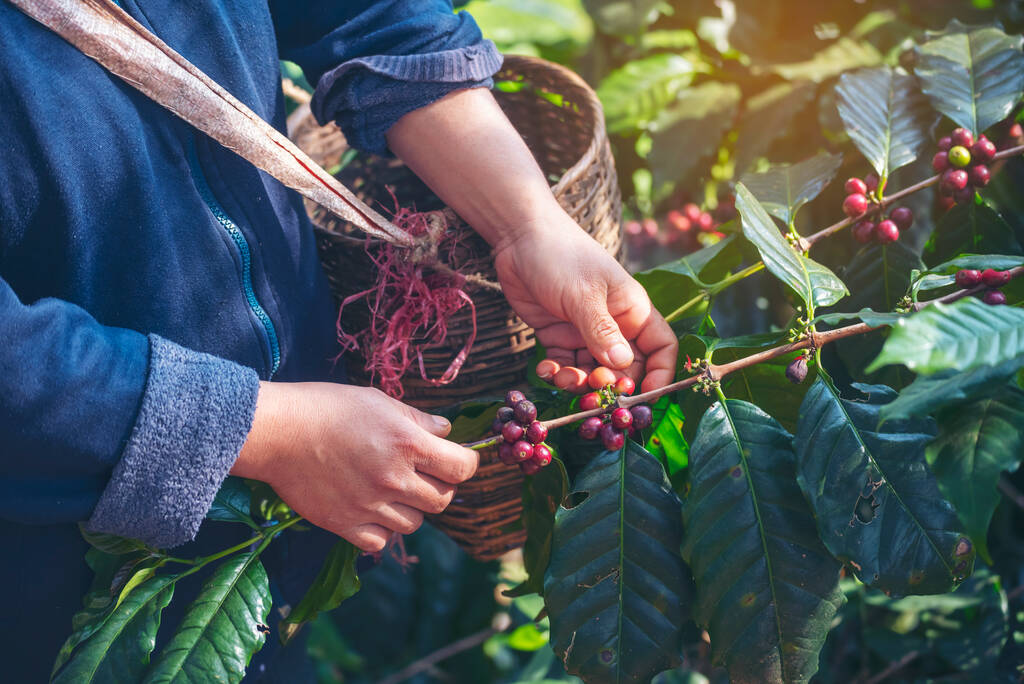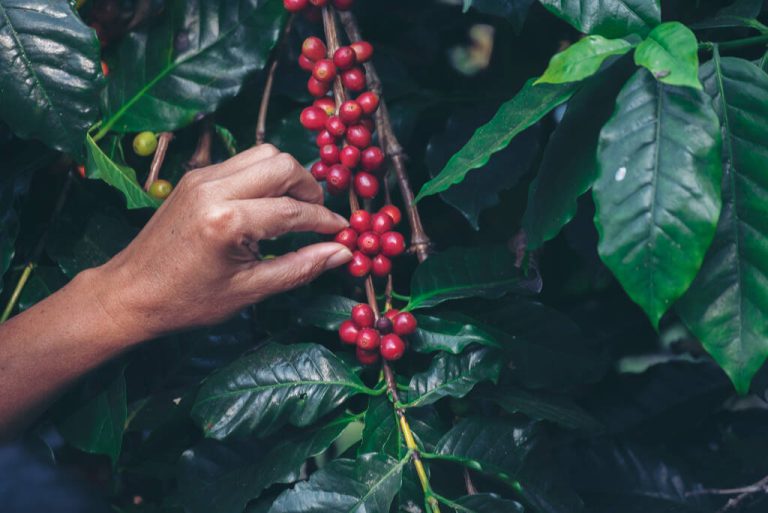Coffee is currently still goods that are produced in mass production. But a lot can change due to climate change.

The popular Arabica bean has dominated the world market. But the plant is threatened with extinction. We explain the background.
Since the discovery of the coffee plant and its fruits many centuries ago, the circle of coffee lovers has grown steadily. Now he extends to an appropriate number of coffee drinkers. Over this time, the coffee market has proven itself and the coffee drink is now one of the largest trading goods worldwide. Accordingly, a wide variety of varieties can also be found on the shelves – 70 % of which are due to the coffee type Coffea Arabica.
Arabica, Robusta, Luwak, Liberica – there are many other coffee plants in addition to them. The number is up to 124 different known species. But mainly the Coffea Arabica and the Coffea Robusta have proven themselves as a kind in the world of coffee and pushed the other species into the background. Therefore, in this section we embark on an exciting journey through a small selection of coffee plants that get stuck in the head, especially in the head. This includes the two species mentioned, as well as the Coffea Liberica or the Luwak, which – even if very weak – are represented on the market and rather represent a marginal group. At the same time, there are many prejudices regarding the Art Robusta compared to the Coffea Arabica and represent them poorly: the Arabica should be better than the robusta. But this statement is not true and definitely has to be questioned.
Robusta, Arabica and other coffee plants
Coffea Robusta and Arabica are the most represented in the world of coffee. However, they differentiate themselves very much. Accordingly, a first distinction between the two coffee plants is very helpful and could already question the stubborn prejudices, since they differ significantly from one another in some characteristics and are accordingly geared towards other tastes.
The Coffea Arabica grows on height landscapes from 1000 meters and requires a stable climate between 15 and 24 degrees. The cherries of this coffee plant have a long time to develop their taste and taste rather sweet and light. The beans can be recognized on the basis of the curved scar on its flat side. The robusta, on the other hand, grows on the lower levels and needs a warmer climate. It is smaller than the Arabica and with a straight scar. The scientific name for this coffee plant is Coffea Canhora. Due to the rather low altitude, their taste is described more earthy and full. Other essential differences between the two coffee plants relate to their ingredients and any intolerances. The caffeine content of the robusta can be up to two or three times higher than that of the Arabica. This value depends on the location of the coffee bushes and therefore fluctuates a little. Furthermore, the coffee beans of the Coffea Robusta contain about 30 % more chlorogenic acid, which can lead to heartburn as well as stomach pain and a higher content of alkaloids.
One of the edge groups with a small proportion in the coffee industry includes the coffee plants Coffea Liberica and the Luwak. The fruits of the Liberica are harder and contain only a little juice and sugar. It looks very different with the high caffeine content. Luwak, on the other hand, is the most expensive type of coffee in the world. It is not a type of coffee, but, as it finds the special, chocolate and earthy aroma, it has a very special way of manufacturing: they are given sneaking cats as food and thus run through their intestinal tract, where the cherries of the coffee plant Coffea Luwak develop. However, the sneaking cats are often locked up in large quantities in small cages, suffer mental illnesses there and have a lack of nutrients.
The lack of taste in the Luwak and the bad conditions of the sneaking cats, which only serve to produce a special taste, could be reasons for neither the Liberica nor the Kopi Luwak with the two leaders. On the other hand, the species Robusta and Arabica cover two different flavors, whereby the Coffea Arabica is apparently preferred by the flavor. This would at least explain the large market share of this type of coffee.
Threat of coffee plants
If the Coffea Arabica is currently still clearly at the top of the coffee market, this can change drastically over the years. Scientists from the botanical gardens in Kew, a district of London, researched this. The whole thing was published in the specialist journal “Plos One”. They created a simulation of the climate over the next few years and came to the conclusion that a temperature increase of 6.4 degrees Celsius would lead to the decimation of certain types of coffee. This will affect the African coffee plant Coffea Arabica, because 99.7% of all cultivation areas of these coffee plants would be eliminated by 2080. With a second simulation with moderate global warming – this is at a temperature increase of 3.8 degrees – it is still 65% loss that the Arabica should enter into. The deforestation of the forests was not considered – another factor that can greatly decimate the growing regions of coffee plants and thus the coffee harvest. If these two factors are added together, the extinction of the Coffea Arabica is much more likely to be extended. Furthermore, the research team came to the conclusion that at least here in 2020 there will be no wild Arabica coffee.
The coffee plant Coffea Arabica finds its origin in the plateaus of Ethiopia. In order to be able to grow and thrive properly, it needs a stable, humidly warm climate. It also requires optimal air and light conditions – such as enough shadows with the help of so -called shadow trees. After about 3-4 years, the first yield can be expected. Due to climate change, i.e. warmth and drought, the natural environment of the Arabica coffee plant is gradually changed and it can no longer survive. Important parameters would have to be met for this. This ultimately leads to the extinction of the coffee plant. If the wild Coffea Arabica dies, it can no longer be taken to help to maintain and breed new varieties. This is important in this respect, since these types of coffee are attacked faster by diseases and pests. The extinction of the coffee plant will also carry further, serious consequences.
Consequences and consequences
It is one thing if there is no longer any Arabica coffee to drink in the near or distant future. However, this will not be the only episode. If something changes in a living space, this can trigger one or even a number of chain reactions. For example, if the cats no longer have mice that they can catch and eat, or dies out the natural habitat for an animal, they have to adapt quickly and search for something new, suitable so as not to die out. The extinction of the coffee plant Coffea Arabica can mean extinction for some other living things.
Another consequence can relate to the cost of the coffee. The fewer Arabica coffee is available in retail with the same demand, the higher the price will increase. If the relationship between demand and the supply can no longer be covered, the price will shoot up and eventually become a difficult and precious luxury goods. If you consider that coffee with around 730,000 tons of production volume in 2013 is currently still in second place in the largest commercial goods, this is guaranteed to be a shock for all coffee lovers of the Arabica bean how quickly the production figures could reduce in the future.

Coffee as in short supply
Coffee seems to be indispensable for many. In the meantime, the daily cup of coffee in the morning, at work or with friends is part of everyday life. However, climate change and the strong demand for coffee art Coffea Arabica triggers a problem that can make this coffee plant appear in short supply in the near future. Around 70 % of all types of coffee on the market are currently dominated by this coffee plant. However, this may change quickly. In contrast, the coffee type Robusta will be preserved for a while because it feels more comfortable in warmer areas. Perhaps this could be a good reason to reach for a variety of the robusta and get involved with the slightly different taste.

